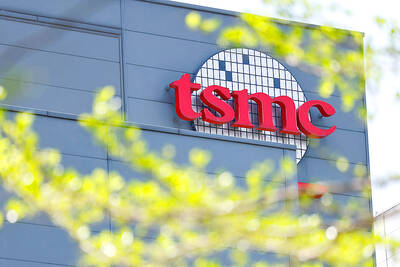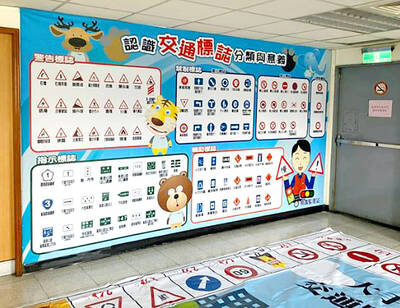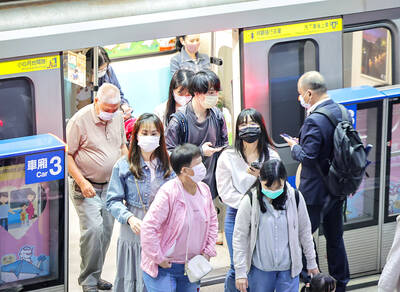Without reforms, the world will be plunged into a water crisis that could be crippling for hot, dry countries, the UN warned yesterday.
In an annual report, the UN said abuse of water was now so great that on current trends, the world will face a 40 percent “global water deficit” by 2030 — the gap between demand for water and replenishment of it.
“The fact is there is enough water to meet the world’s needs, but not without dramatically changing the way water is used, managed and shared,” it said in its annual World Water Development Report.
“Measurability, monitoring and implementation” are urgently needed to make water use sustainable, said Michel Jarraud, head of agency UN-Water and the World Meteorological Organization.
Surging population growth is one of the biggest drivers behind the coming crisis, the report said.
The Earth’s current tally of approximately 7.3 billion humans is growing by about 80 million per year, reaching a likely 9.1 billion by 2050.
To feed these extra mouths, agriculture, which already accounts for about 70 percent of all water withdrawals, will have to increase output by approximately 60 percent.
The report pointed to a long list of present abuses, from contamination of water by pesticides, industrial pollution and runoff from untreated sewage, to over-exploitation, especially for irrigation.
More than half of the world’s population takes its drinking supplies from groundwater, which also provides 43 percent of all water used for irrigation.
About 20 percent of these aquifers are suffering from perilous over-extraction, the report said.
By 2050, global demand for water is likely to rise by 55 percent, mainly in response to urban growth.
“Cities will have to go further or dig deeper to access water, or will have to depend on innovative solutions or advanced technologies to meet their water demands,” the report said.
The overview, scheduled for release in New Delhi, draws together data from 31 agencies in the UN system and 37 partners in UN-Water.
It placed the spotlight on hot, dry and thirsty regions which are already struggling with relentless demand.
In the North China Plain, intensive irrigation has caused the water table to drop by more than 40m in some places, it said.
In India, the number of so-called tube wells, pulling out groundwater, rose from less than a million in 1960 to nearly 19 million 40 years later.
“This technological revolution has played an important role in the country’s efforts to combat poverty, but the ensuing development of irrigation has, in turn, resulted in significant water stress in some regions of the country, such as Maharashtra and Rajasthan,” the report said.
Water expert Richard Connor, the report’s lead author, said the outlook was bleak for some areas.
“Parts of China, India and the United States, as well as in the Middle East, have been relying on the unsustainable extraction of groundwater to meet existing water demands,” he said.
“In my personal opinion this is, at best, a short-sighted plan B. As these groundwater resources become depleted, there will no plan C, and some of these areas may indeed become uninhabitable,” he said.

EUROPEAN TARGETS: The planned Munich center would support TSMC’s European customers to design high-performance, energy-efficient chips, an executive said Taiwan Semiconductor Manufacturing Co (TSMC, 台積電), the world’s largest contract chipmaker, yesterday said that it plans to launch a new research-and-development (R&D) center in Munich, Germany, next quarter to assist customers with chip design. TSMC Europe president Paul de Bot made the announcement during a technology symposium in Amsterdam on Tuesday, the chipmaker said. The new Munich center would be the firm’s first chip designing center in Europe, it said. The chipmaker has set up a major R&D center at its base of operations in Hsinchu and plans to create a new one in the US to provide services for major US customers,

The Ministry of Transportation and Communications yesterday said that it would redesign the written portion of the driver’s license exam to make it more rigorous. “We hope that the exam can assess drivers’ understanding of traffic rules, particularly those who take the driver’s license test for the first time. In the past, drivers only needed to cram a book of test questions to pass the written exam,” Minister of Transportation and Communications Chen Shih-kai (陳世凱) told a news conference at the Taoyuan Motor Vehicle Office. “In the future, they would not be able to pass the test unless they study traffic regulations

‘A SURVIVAL QUESTION’: US officials have been urging the opposition KMT and TPP not to block defense spending, especially the special defense budget, an official said The US plans to ramp up weapons sales to Taiwan to a level exceeding US President Donald Trump’s first term as part of an effort to deter China as it intensifies military pressure on the nation, two US officials said on condition of anonymity. If US arms sales do accelerate, it could ease worries about the extent of Trump’s commitment to Taiwan. It would also add new friction to the tense US-China relationship. The officials said they expect US approvals for weapons sales to Taiwan over the next four years to surpass those in Trump’s first term, with one of them saying

‘COMING MENACINGLY’: The CDC advised wearing a mask when visiting hospitals or long-term care centers, on public transportation and in crowded indoor venues Hospital visits for COVID-19 last week increased by 113 percent to 41,402, the Centers for Disease Control (CDC) said yesterday, as it encouraged people to wear a mask in three public settings to prevent infection. CDC Epidemic Intelligence Center Deputy Director Lee Chia-lin (李佳琳) said weekly hospital visits for COVID-19 have been increasing for seven consecutive weeks, and 102 severe COVID-19 cases and 19 deaths were confirmed last week, both the highest weekly numbers this year. CDC physician Lee Tsung-han (李宗翰) said the youngest person hospitalized due to the disease this year was reported last week, a one-month-old baby, who does not